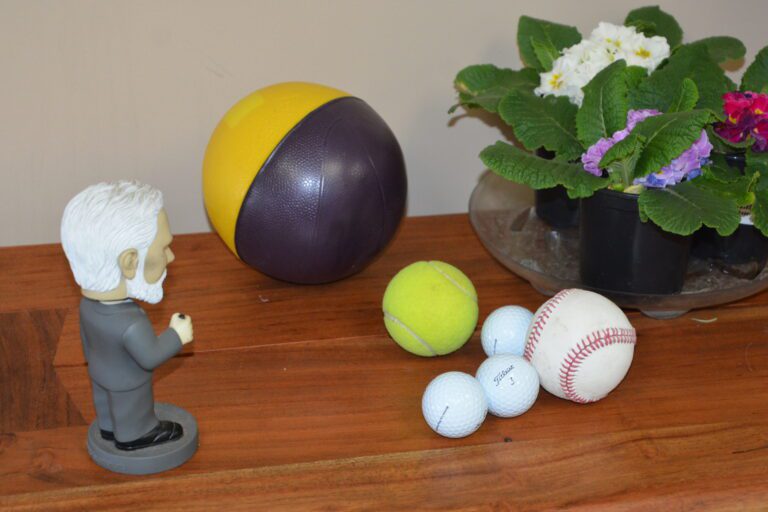
Despite the common complaint from every teenager that they’ll never need mathematics after they graduate from high school, in fact math is a constant in our lives and something we enjoy every day.
Baseball is by now obsessed with statistics and analytics as the film “Moneyball” amply demonstrated. I work with professional athletes and they are all consumed by the analytics of their pitching velocity, spin rates and curve or fastball movement. PGA golfers are the same. They love to discuss things like club face angles, “Moments of Inertia” and spin rates.
The world of film frequently connects with the world of mathematics. The recent blockbuster “Oppenheimer” focused on many math whizzes, including Robert Oppenheimer as well as Albert Einstein. The Oscar-winning film “A Beautiful Mind” starring Russell Crowe was about John Nash, the math genius at Princeton. Federico Fellini’s cinematic masterpiece “8 ½” not only used a number as a title but used the geometric symbol of a circle in the final scene as he had his characters hold hands and dance around circus ring.
Poetry often uses geometric references as well. Robert Frost’s classic poem “The Secret Sits” reads like this
“We dance round in a ring and suppose,
But the Secret sits in the middle and knows.”
- E. B. White’s marvelous short story “The Ring of Time” is all about a young girl practicing on the back of a circus horse as she rides in circles around a ring. The geometry and the triumph of circles.
I traveled into Manhattan last week to catch a glimpse of the New York City Ballet perform the Jerome Robbins piece “The Concert.” To my surprise the best piece in the program was not “The Concert” but rather Balanchine’s “Bello Della Regina” set to music by Verdi. The charm of the Balanchine piece was his embrace of symmetry and geometry through choreography. That ballet was made of duets, trios, and quartets of dancers all moving in synchrony. Great choreography is geometry in motion and George Balanchine may be the greatest choreographer in history.
Obviously, photography is controlled by mathematical proportion or what is referred to as the rule of thirds. Perhaps the best photographer in history was Henri Cartier-Bresson, who always seemed to capture “the decisive moment” as he photographed. But the reality is he knew all about geometry and composition and simply set up the situation with those angles in mind and then waited patiently for the “decisive moment” to arrive in the frame.
As a kid the only subject I enjoyed was mathematics. To me mathematics seemed definitive, clear and beautiful. When I got to college my plan was to major in math, but my second semester calculus course was taught by Dr. Martin, a young professor from MIT who was very smart but did not have a clue as to how to teach. I got an F in the class and had to rethink my career plans.
I wound up choosing psychology and you may ask what clinical psychology has to do with math. In fact plenty. Any good theory in psychoanalysis has a simple and comprehensible geometry to it. The most important and the most famous psychologist in history is Sigmund Freud and one reason for his vast impact has something to do with his theory of the id, the ego and the superego. This theory is pure geometry with the unconscious housing overwhelming emotions underneath and separated from the ego by a thick line of defenses. Any school child can understand this theory. It’s geometry at its finest.
Mathematics has a long and distinguished history with names like Pythagoras, Isaac Newton, Poincare, Rene Descartes, Euclid and Einstein. But they are like the famous Rodney Dangerfield catch phrase “I can’t get no respect.” But respect they should have. Virtually every cultural domain you can think of, including sports, film, poetry, photography and dance, owe a great debt of gratitude to the numbers game. So let’s here it for the catchphrase 1 + 1 = 2. What could be prettier than that?
Maybe the only thing prettier that a simple equation is the female face and you could argue that female facial beauty has little to do with mathematics. But long ago the Greek philosopher Proclus stated: “Wherever there is number, there is beauty.” Thousands of years ago the Golden Ratio was discovered. The Golden Ratio is the number 1 to 1.618, which is now used by all plastic surgeons to guide their effort to enhance female facial beauty. They call this the phi mask and as an example, Angelina Jolie is said to have a perfectly proportioned face or the perfect phi mask..
The Golden Ratio was used by Leonardo Da Vinci to create his sculptures as did the designer of the Parthenon in Athens. The Golden Ratio is also used by credit card companies as they manufacture the cards. Don’t you feel that the shape of the credit cards seems just right? I know I do.
So three cheers for numbers, math and that Golden Ratio. I know in your heart of hearts, you love credit cards, the face of Angelina Jolie, the statue “David” and the sight of the Parthenon just as much as I do.







